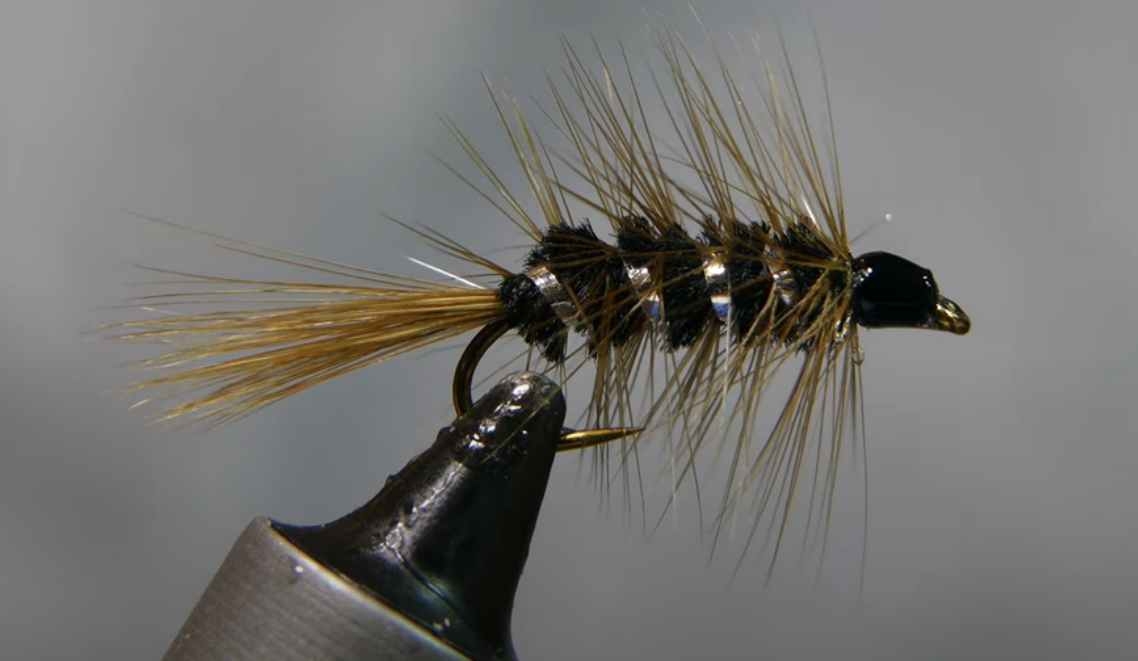
Illustration by Thom Glace – the rainbow trout, brown trout, and brook trout are all susceptible to Wooly Worm seduction. Art used with permission.
The Woolly Worm
By Skip Clement
For a personal achievement not worth mentioning, my friend and angling partner Angie Roth gave me The History of Fly-Fishing in Fifty Flies, written by Ian Outlaw and published by Quarto Publishing Group UK in 2015.
The book
“Recounts the story of a sport that dates back two thousand years, focusing on milestone flies from the first feathered hook to contemporary patterns using cutting-edge materials. From the many thousands of fly patterns developed over the centuries (there are more than 1,700 salmon fly patterns alone), these fifty have been chosen to represent the development of the flies themselves.” — Publishers review
What caught my eye was the contribution of Pennsylvanians, my home waters
For example:
Theodore Gordon, who could be considered the father of modern dry fly fishing, was born in Pittsburgh, Pennsylvania, in 1854.
Many of the patterns in the book have roots in Pennsylvania, like the Elk Hair Caddis, which was created by Al Toth, who often fished Loyalsock Creek in Lycoming County.
NOTE1: Loyalsock Creek is a tributary of the Susquehanna River and is known for its steep gradient and rushing waters.
NOTE2: Around 1957, Toth began developing a fly that would be more buoyant than traditional patterns. Thus, the Elk Hair Caddis was born.
More Pennsylvanians: Flymph (James Leisenring 1941), the Comparadun (Al Caucci 1974), and the Clouser Minnow (Bob Clouser 1988)
NOTE3: Dave Whitlock of Oklahoma gets credited for his innovative grasshopper imitation, Dave’s Hopper; the author does mention that Pennsylvanian Ed Shenk was working on a similar and more simplistic imitation around the same time, the Letort Hopper. Both varieties have earned their places in every fly angler’s box.
Theodore Gordon, who could be considered the father of modern dry fly fishing, was born in Pittsburgh, Pennsylvania, in 1854

The Woolly Worm had its origin in the 1600 hundreds. Screen shot . . .
NOTE 4: By the 1880s, brown trout stockings began to take hold in much of North America, and anglers soon found out that they were much more challenging to catch than their rainbow and brook trout brethren. However, these newly-arrived browns, much to the delight of Gordon, who retreated to in the Catskills of New York, seemed more geared toward surface feeding. — Ralph Scherder
Pennsylvanian Russell Blessing developed the Woolly Bugger [1967] – probably the most well-known and most used fly in the world of fly fishing today. It’s almost impossible to find someone who isn’t carrying at least a couple of variations of this pattern in their fly boxes.
NOTE 5: Outlaw says that the ‘Bugger’ borrows from the Woolly Worm – developed and made famous almost 20 years earlier.
NOTE 6: The style of tying with palmered hackle over the body originated in England in the 1600s.

